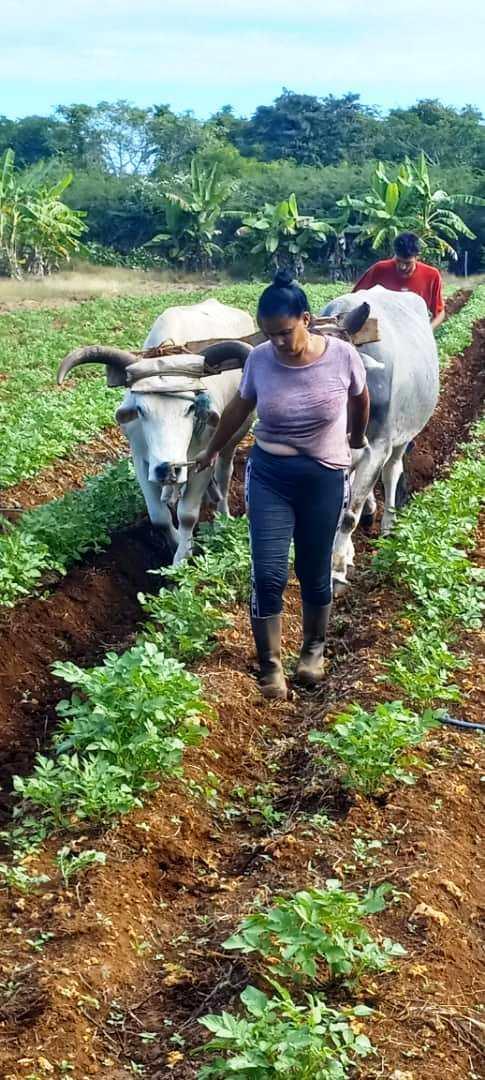
ZAPATA SWAMP -Increasing local food production has been a permanent goal for the residents of the Zapata Swamp, convinced that it is not impossible, despite the fact that their land is considered unproductive.
Guaranteeing food for the people in their own territory has become almost an obsession. No one there is happy with the idea that other territories assume, to some extent, this responsibility. The municipality is self-sufficient in about 40% of agricultural products, but the inhabitants are not standing idly by.
Without taking into account the risk and even the possibility of failure that such an adventure implies, the inhabitants of the Zapata Swamp planted, for the first time, one hectare of potato on agroecological basis in areas close to the community of Soplillar.
The experience put an end to the myth that nothing grows in the Zapata Swamp, much less the popular tuber, said Juan Luis Rangel Duarte, president of the Antonio Mauri Credit and Service Cooperative (CCS in Spanish), founded in 2010 and the only one of its kind in Cuba's largest wetland.
In the small plantation, which was only cultivated with organic material, ten tons of potatoes were harvested and sold in the localities of Soplillar, Pálpite, Mario López, Playa Larga, Caletón, Buenaventura, Santo Tomás and Los Hondones.
"It was distributed at a rate of five pounds per capita, and the people had us going crazy, because everyone wanted it and there was only enough to distribute in the western region of the territory", said Rangel Duarte.
It is estimated that, in order to cover the entire population of the municipality, they need to plant at least five hectares, a goal that should be achieved next year, stimulated by the enthusiasm of the neighbors. This product would be delivered in addition to the national balance.
The outstanding producer admitted that, although the cost of production was a little high, the organic potato showed that, with effort and the use of science and technology, anything is possible.
Dr. Giraldo Martín Martín, specialist of the Indio Hatuey Pasture and Forage Station, gave an account of the novelty during a visit to the southern region, shortly after planting. "The hectare of the tuber grows with good vegetative condition," said the researcher.
On that occasion, Martín Martín praised the fact that more and more farmers in the country are betting on agroecological farming. This is a great advantage, he insisted.
Apparently, nothing can discourage the commitment of those who live in this unique scenario to expand this productive option.
Experts consider that the Zapata Swamp has potentialities that should be exploited to the maximum, since food production is a priority.
And no one better than the cenagueros to determine their own destiny in a vast area of more than 700,000 hectares and about 9,000 inhabitants distributed in 16 communities, several of them with difficult access.
This reality is a challenge for the local inhabitants, who cannot ignore the mission of protecting the largest and best preserved wetland of the insular Caribbean and, at the same time, encourage agricultural production, better exploit the riches of the fishing sector, and increase the contribution of processing centers.
In addition to the plots, yards and other available spaces that are opening up for the production of crops (especially bananas), vegetables and fruit trees, there are more than 40 producers of the cooperative led by Juan Luis Rangel Duarte.
With no previous experience in this type of agriculture, the results obtained from the potato cultivation on an agroecological basis show that the soils in the area are not as infertile as previously thought, and they represent a good argument in favor of food sovereignty in the territory.















